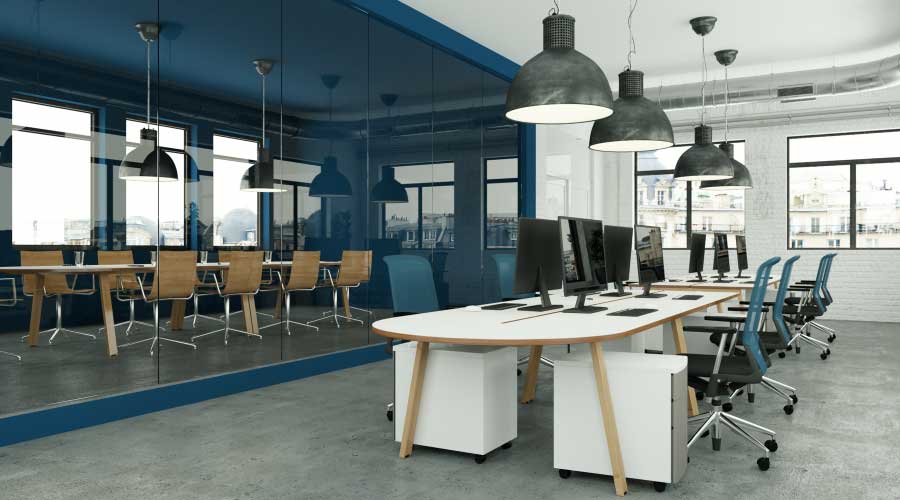Making An Intermediate Upgrade Better
Facility managers who use professional energy auditors and personnel versed in lighting efficiency (e.g., energy service companies) will often boast about their choices of lighting equipment and the wattage they've eliminated. And they should be proud of themselves for using the best lamp/ballast combinations, new or improved fixtures, and motion sensors to shut off lights when spaces are unoccupied. But they too could benefit by turning over a few more rocks in the quest to augment savings.
When working with existing fixtures, the menu is somewhat limited: We can change the socket bars to alter the location or quantity of lamps, maybe add a better reflector, and possibly change the lens/diffuser/louver to improve distribution. By instead replacing (for example) recessed parabolic fixtures with recessed indirects, distribution may be improved to the point that illuminance ratios (i.e., highest to lowest surface brightness) are reduced, allowing for overall lower foot-candle levels.
The eye is calibrated by the brightest surface within the visual field, with all other surfaces looking darker. Some 1980s vintage fixtures place a lot of light on the task but darken walls in the process, creating what some lighting experts call "the cave effect." When indirect lighting distribution is used to spread light wider, spaces appear brighter and eyes are less strained, perhaps requiring fewer lumens for today's computer-based tasks.
Occupancy sensors are handy for small offices, conference rooms, and irregularly occupied spaces (e.g., store rooms) — and they just keep getting better. Instead of choosing those that directly replace a standard wall switch that turns all lights on or off, consider bi-level sensors that allow only half the fixtures (or lamps) in a room to be turned on when someone enters. In many cases (especially where natural light is present), only a small amount of additional light is needed, instead of all fixtures being on (which may be necessary at night). When more light is needed, such sensors have a second switch to manually turn the remaining lights on. When the space is again unoccupied, both circuits are automatically shut off.
Vacancy sensors save more than occupancy sensors. Instead of always turning on lights when someone enters, vacancy sensors require the entrant to push a button to power the lights. The sensor will keep lights on while a space is occupied, and shut them off when it's empty. In many perimeter spaces, light entering through windows or nearby glazed dividers may be sufficient for a short visit to an office. Avoiding unnecessary lamp starts also extends lamp lifetime.
Other Opportunities
It is not unusual in facilities that have focused attention on workspace lighting to ignore rarely occupied areas that are lit 24/7, such as stairwells. Improving our intermediate upgrade with bi-level stairwell fixtures could save a bundle without compromising safety. Such fixtures have built-in motion sensors that keep stairwells lit at one-third the usual light level until someone enters the space. At that point, the built-in sensor raises the light level to full until the entrant is gone. Both security and safety are maintained, and savings add up fast from a 67 percent wattage reduction when stairwells are empty.
Another often overlooked 24/7 opportunity is in elevators. Many cabs still contain incandescent fixtures that will accept only MR-16 or R20 incandescent spot lamps. They have remained unchanged because no CFL will properly fit into such small enclosures. Several brands of LED lamps are now available that are designed specifically to do so. LEDs may cut such incandescent wattage by 75 percent or more, and 24/7 operation may overcome the high first cost of LED units. Eliminating the need to replace the incandescents several times a year is an extra maintenance perk.
Making Upgrades Even Better: Intermediate Upgrade
Original plan: The best lamp/ballast combinations, new or improved fixtures,
and motion sensors
Extra steps that could pay off:
- Replace existing fixtures
- Use bi-level occupancy sensors or vacancy sensors
- Install bi-level stairwell fixtures
- Replace incandescent elevator lamps with LEDs
|
Related Topics:













